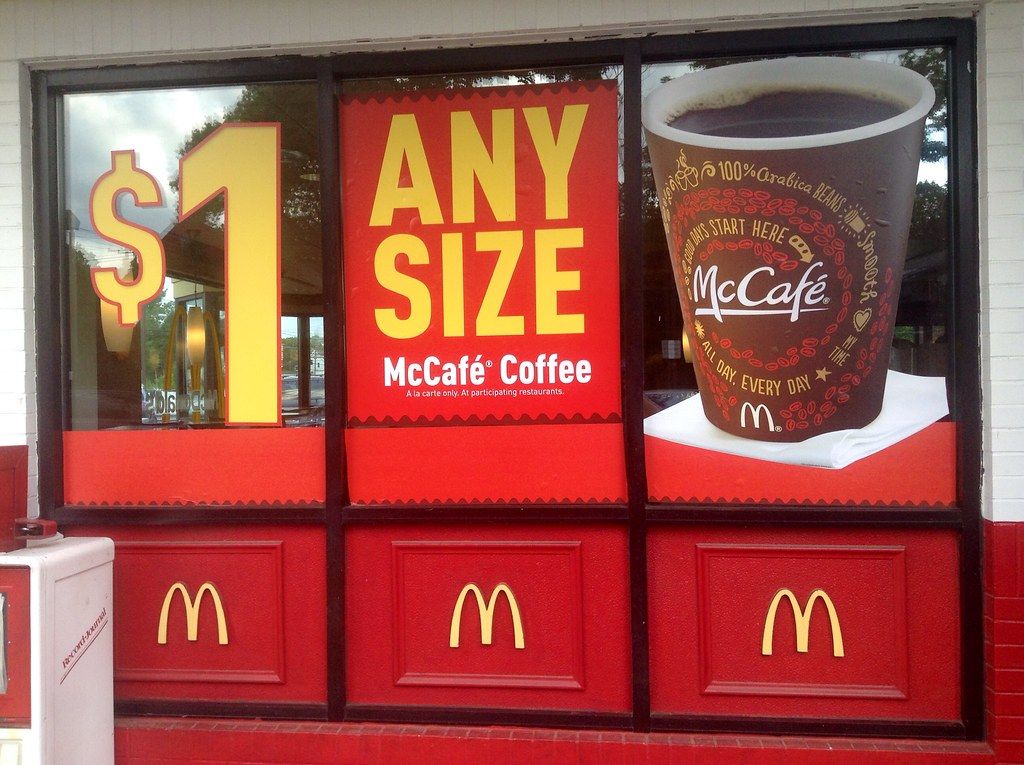
Buying a new car can be a double-edged sword, bringing both the joy of a new acquisition and the potential for significant financial pain. Beyond the initial sticker price, a complex web of hidden costs, including registration, insurance, routine maintenance, and unexpected repair expenses, can quickly accumulate. For many consumers, these additional expenditures are often underestimated, transforming what seemed like an exciting purchase into a demanding financial commitment. It is crucial for prospective vehicle owners to look beyond the showroom appeal and understand the long-term financial implications of their choices.
The market offers a vast array of vehicles, each with its own reliability profile and associated maintenance costs. While some models are renowned for their durability and affordability of upkeep, others are notorious for their demanding service schedules and costly repairs. These high-maintenance vehicles, often found in luxury or high-performance segments, can become a “money pit” if buyers are unprepared for the ongoing financial outlays. Being informed about these potential pitfalls is the first step in making a truly smart purchasing decision.
This comprehensive article aims to shed light on 15 specific vehicles that consistently appear on lists of cars with notoriously high repair and maintenance costs. Drawing exclusively from robust data provided by sources like RepairPal and AutoList, we will present objective assessments of these models. Our goal is to equip consumers with detailed, factual information regarding reliability ratings, average annual repair expenses, and the likelihood of needing major repairs, enabling you to navigate the complexities of vehicle ownership with greater clarity and foresight. We will begin by examining the first seven models that demand a closer look due to their significant long-term costs.
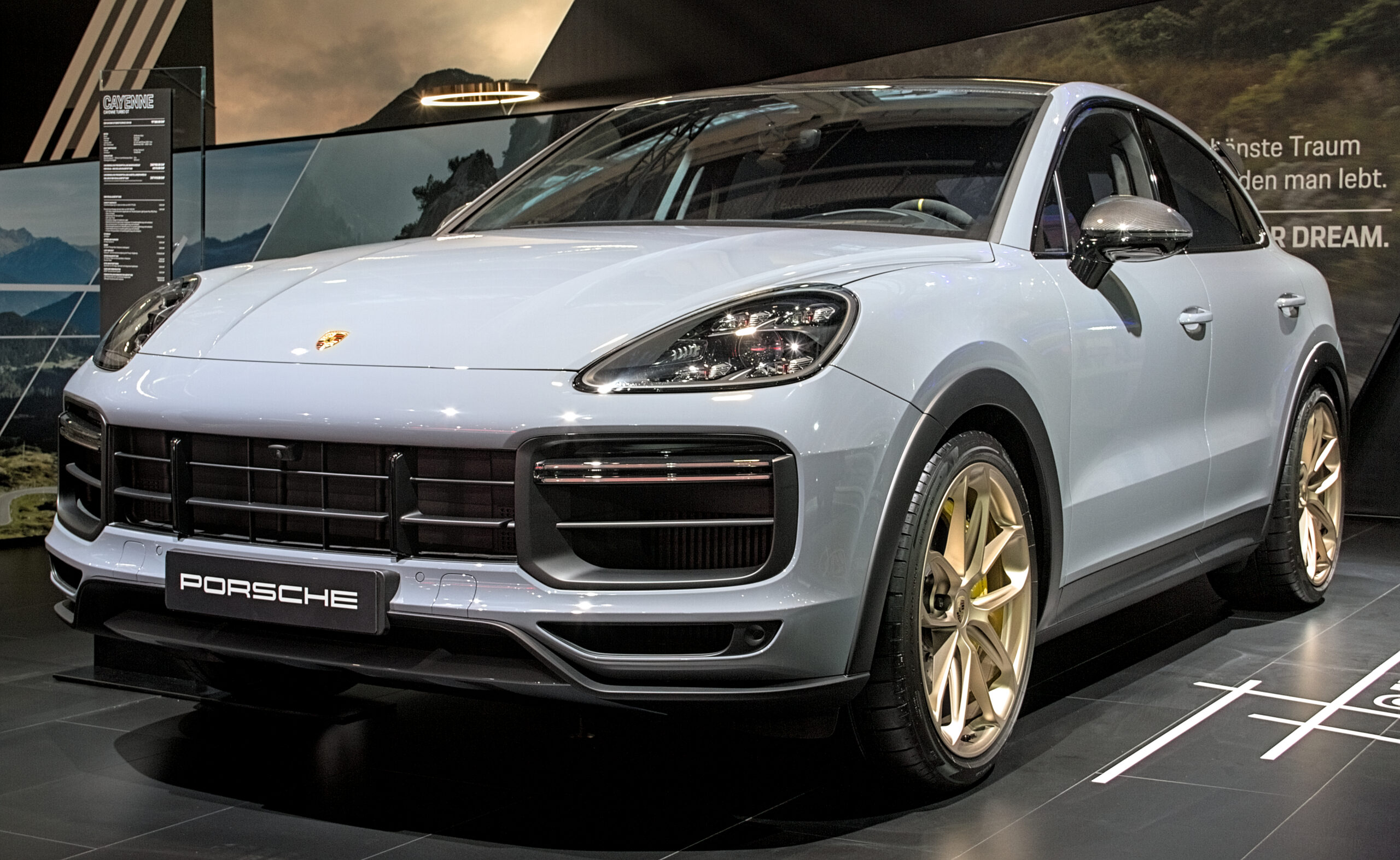
1. **Porsche Cayenne**The Porsche Cayenne, a flagship in the luxury SUV segment, embodies a blend of high-end performance and sophisticated design, often touted as “the Porsche of SUVs.” Its powerful engine options, combined with exceptional handling characteristics, position it to rival many dedicated sports cars, making it an undeniably attractive prospect for drivers seeking dynamic capability in a versatile package. However, this pursuit of performance and luxury often translates directly into higher operational costs, a reality that demands careful consideration from potential owners.
When examining the long-term reliability of the Cayenne, the data points to significant financial commitments. The likelihood of a Porsche Cayenne needing a repair within a ten-year ownership period is a substantial 60.9%. This high probability indicates that owners should anticipate encountering repair needs more frequently than with more conventionally reliable vehicles. Furthermore, the vehicle’s RepairPal reliability rating is a mere 1.5 out of 5, starkly illustrating its position as a less reliable option within its category.
Financially, the average repair cost for a Porsche Cayenne each year is $1,231, which is considerably higher than the average cost of $807 for other vehicles. Over a 10-year period, the total ownership cost for a Cayenne is estimated at $20,552, with annual expenses starting at $721 in the first year and climbing to $3,827 by the tenth year. These figures underscore the considerable long-term financial commitment involved in owning this luxurious SUV.
Car Model Information: 2020 Porsche Cayenne Base
Name: Porsche Cayenne
Manufacturer: Porsche
Production: August 2002–present
ModelYears: 2003–present
Class: crossover SUV
Layout: Front-engine, four-wheel-drive
Categories: 2010s cars, 2020s cars, All-wheel-drive vehicles, All articles needing additional references, All articles with dead external links
Summary: The Porsche Cayenne is a series of automobiles manufactured by the German company Porsche since 2002. It is a luxury crossover SUV, and has been described as both a full-sized and a mid-sized vehicle. The first generation was known within Porsche as the Type 9PA (955/957) or E1. It was the first V8-engined vehicle built by Porsche since 1995, when the Porsche 928 was discontinued. It is also Porsche’s first off-road variant vehicle since its Super and Junior tractors of the 1950s, as well as the first production Porsche with four doors. Since 2014, the Cayenne has been sold alongside a smaller Porsche SUV, the Macan.
The second-generation Cayenne (Type 92A or E2) was unveiled at the 2010 Geneva Motor Show in March. The Cayenne shares its platform, body frame, doors, and electronics with the Volkswagen Touareg and Audi Q7. It received a facelift in 2014 with minor external changes, and introduced a new plug-in E-Hybrid version with its public launch at the Paris Motor Show. Since 2008, all engines have featured direct injection technology. The third generation (Type 9YA or E3) was unveiled in 2017 in the German city of Stuttgart.
Get more information about: Porsche Cayenne
Buying a high-performing used car >>>
Brand: Porsche Model: Cayenne
Price: $43,490 Mileage: 35,240 mi.
Read more about: Don’t Waste Your Cash: 6 SUVs Prone to Costly Early Fixes
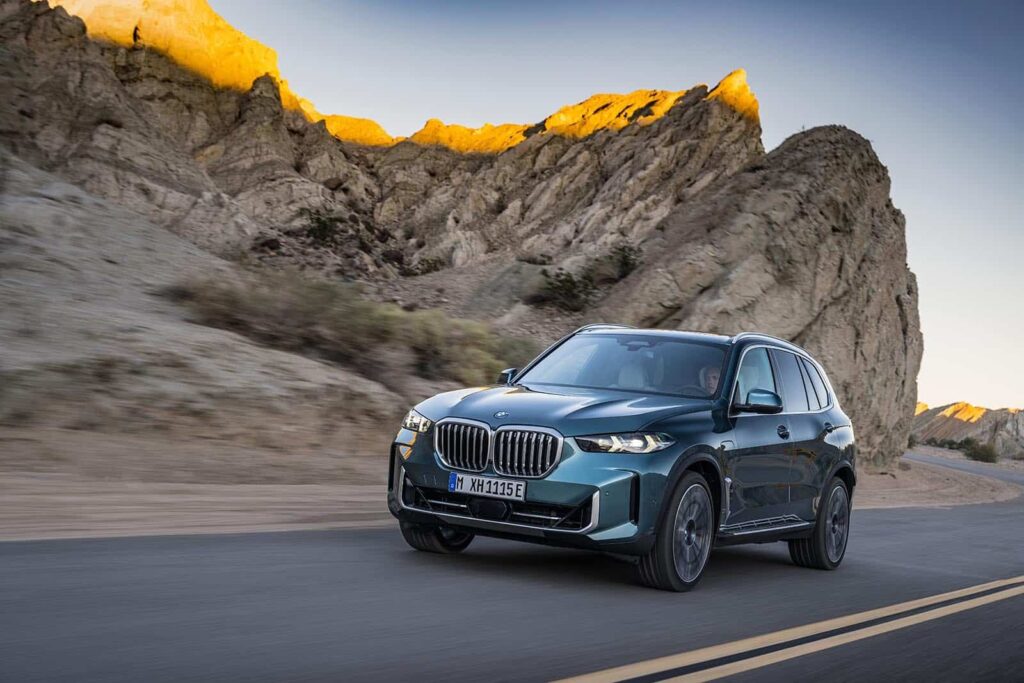
2. **BMW X6 M**The BMW X6 M distinguishes itself as a high-performance variant within BMW’s mid-size X6 SUV lineup, known for its distinct, sharply sloped, coupe-like roofline. This design choice, while contributing to its aggressive and sporty aesthetic, inherently sacrifices some practical aspects, notably rear headroom and cargo space. For enthusiasts, the allure of its performance capabilities often overshadows these concessions, yet the financial implications of maintaining such a specialized vehicle are a paramount concern for discerning consumers.
From a reliability standpoint, the BMW X6 M receives a 2-star rating on RepairPal. While slightly better than some on this list, it still falls below the average for overall vehicle dependability, suggesting that owners may face more frequent or severe issues compared to highly reliable models. According to AutoList, the probability of the X6 M needing a major repair over a ten-year period is estimated at 54.6%. This statistic is a clear indicator that significant, potentially budget-stretching repairs are a realistic expectation for owners.
The annual financial burden of maintaining a BMW X6 M is substantial, with an average annual repair cost of $1,206. This positions it firmly among the most expensive SUVs to keep in optimal condition each year. Furthermore, over a full decade of ownership, the total estimated cost of maintaining this performance SUV is $18,900. Annual costs commence at $693 in the first year but are expected to increase to $3,479 by the tenth year, reflecting the escalating demands and potential wear and tear on high-performance components as the vehicle ages. These figures emphasize the need for a robust budget when considering a BMW X6 M.
Car Model Information: 2024 Ford Mustang GT Premium
Name: BMW X6
Caption: BMW X6 (G06)
Manufacturer: BMW
Production: December 2007 – present
ModelYears: 2008–present
Class: Executive car,crossover SUV
BodyStyle: coupé SUV
Layout: Front-engine, four-wheel-drive
Related: BMW X5
Categories: 2000s cars, 2010s cars, 2020s cars, All-wheel-drive vehicles, All Wikipedia articles written in British English
Summary: The BMW X6 is a mid-size luxury crossover SUV by German automaker BMW. The BMW X6 is the originator of the sports activity coupé (SAC), referencing its sloping rear roof design. It combines the attributes of an SUV (high ground clearance, all-wheel drive and all-weather ability, large wheels and tires) with the stance of a coupé (styling featuring a sloping roof). It is built in BMW’s North American plant in Greer, South Carolina alongside the BMW X5, whose platform it shares. Prior to the release of the X7, the X6 was considered a flagship SUV for BMW.
The first generation (E71) was released for sale in April 2008 for the 2008 model year, while the second-generation X6 (F16) was launched at the Paris Motor Show in 2014. The third-generation X6 was revealed in July 2019.
Get more information about: BMW X6
Buying a high-performing used car >>>
Brand: BMW Model: X6 M
Price: $48,997 Mileage: 24,328 mi.
Read more about: 15 Classic Cars You Might Want To Skip: An Expert Guide for Discerning Collectors
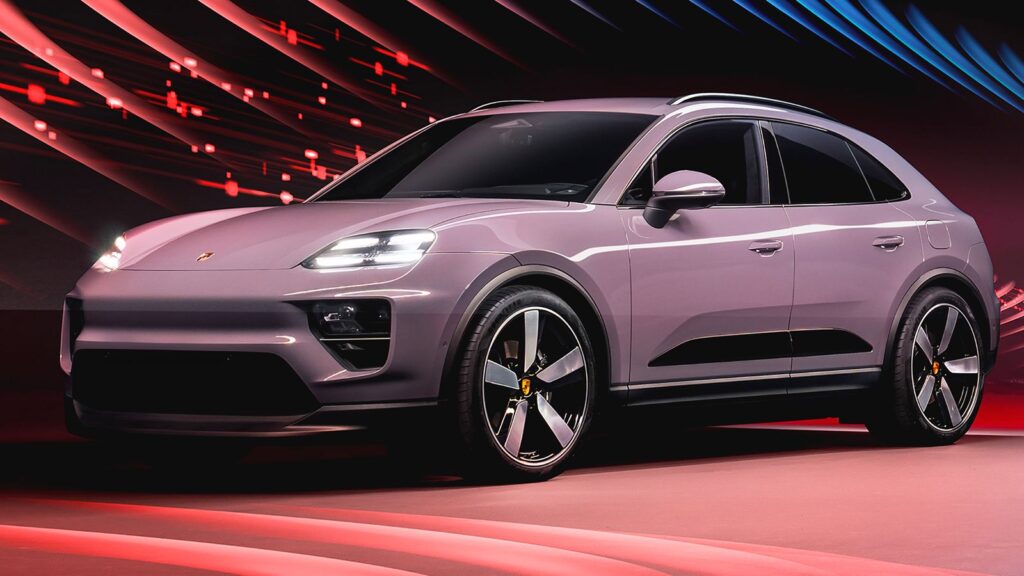
3. **Porsche Macan**The Porsche Macan represents the brand’s foray into the compact SUV market, designed to offer impressive performance and the distinctive Porsche driving experience in a more accessible and agile package. Its appeal lies in combining the practicality of an SUV with the exhilarating dynamics expected from a sports car manufacturer. However, as observed with other Porsche models, this blend of performance and luxury often translates into higher-than-average ownership costs, particularly concerning maintenance and repairs.
In terms of reliability, the Porsche Macan receives a low rating of 1.5 out of 5 on RepairPal. This score is a strong signal to prospective buyers that the vehicle’s reliability is a concern, indicating a higher likelihood of encountering mechanical issues. This lower reliability is further underscored by an estimated 60.9% chance that a Macan will require a major repair within ten years of purchase. Such a high probability of significant work means owners must be financially prepared for substantial, unforeseen expenses throughout the vehicle’s lifespan.
The financial outlay for maintaining a Porsche Macan is considerable, with an average annual repair cost of $1,265. This places the Macan’s yearly upkeep expenses among the highest, surpassing even some of Porsche’s dedicated sports cars in terms of maintenance burden. Over a 10-year period, the total estimated maintenance and repair costs for a Macan amount to $20,137. Annual costs for the Macan typically start at $679 in its first year, but these are projected to rise steeply to $3,786 by the tenth year. These escalating costs highlight the importance of factoring in long-term financial planning when considering this high-performance compact SUV.
Car Model Information: 2017 Porsche Macan Base
Name: Porsche Macan
Manufacturer: Porsche AG
Production: February 2014 – present
ModelYears: 2015–present
Class: Compact luxury crossover SUV
BodyStyle: SUV
Caption: 2024 Porsche Macan 4 Electric
Categories: All-wheel-drive vehicles, All Wikipedia articles written in British English, All articles needing additional references, All articles with unsourced statements, Articles needing additional references from September 2025
Summary: The Porsche Macan is a compact luxury crossover SUV (D-segment) produced by German manufacturer Porsche since 2014. It is the smaller SUV from Porsche below the Cayenne. The first-generation Macan entered production from February 2014 with petrol and diesel engine options. In 2024, Porsche released the second-generation Macan which is a battery electric vehicle built on the dedicated Premium Platform Electric (PPE) EV platform. The first-generation and second-generation Macan will be marketed side-by-side, providing multiple powertrain options for consumers.
Since 2015, its first full year in the market, the Macan has been the best-selling Porsche model globally ahead of the larger Cayenne.
Get more information about: Porsche Macan
Buying a high-performing used car >>>
Brand: Porsche Model: Macan
Price: $24,891 Mileage: 56,317 mi.
Read more about: Beyond Billions: A Deep Dive into Bill Gates’ Unexpected Car Collection – From Rare Porsches to Eco-Friendly EVs and Everyday Rides
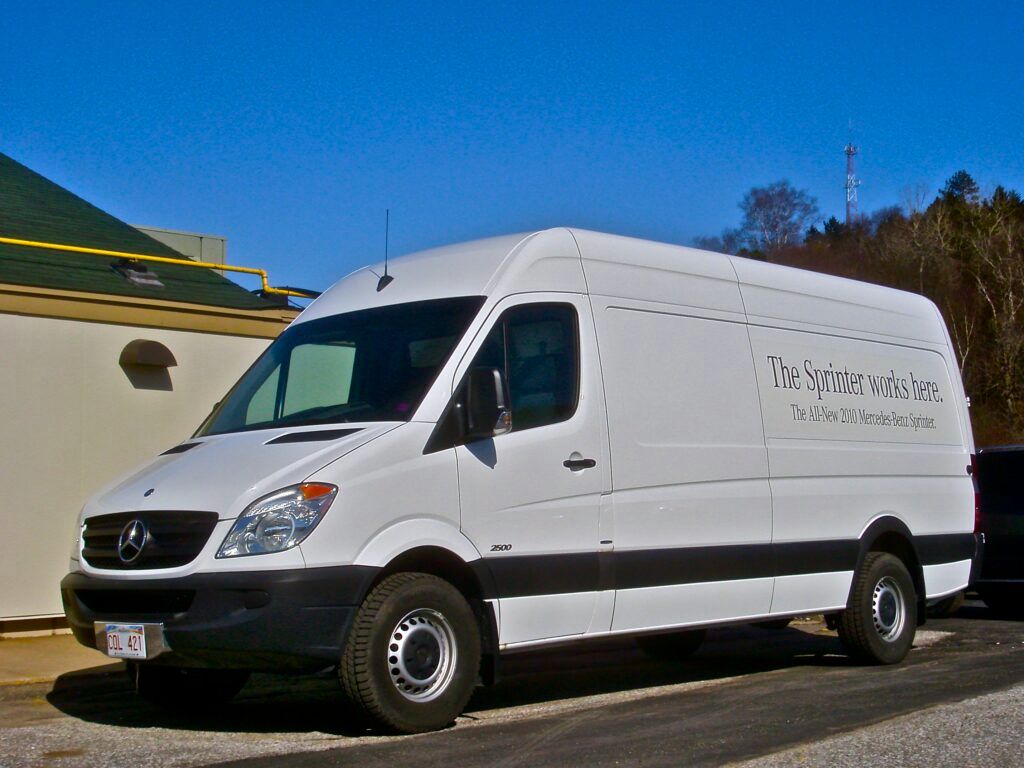
4. **Mercedes-Benz Sprinter Van**The Mercedes-Benz Sprinter Van is a widely recognized and utilized commercial vehicle, valued for its exceptional versatility and adaptability across various business and occupational needs. Available in a multitude of sizes and roof lengths, it provides robust utility, bolstered by the premium branding of Mercedes-Benz. While its flexibility and prestigious badge are strong selling points, the operational reality for owners involves acknowledging significant potential maintenance and repair expenses.
One of the key considerations for the Sprinter Van is its reliability and the associated costs. Data indicates a 56.7% risk of this van needing extensive repairs within the first ten years of ownership. This elevated probability suggests that businesses and individuals relying on the Sprinter Van for their operations should factor in potential downtime and substantial repair budgets. While it offers versatility and the prestige of the Mercedes-Benz brand, the van’s higher maintenance and repair charges contribute to this elevated chance of needing a major repair over time.
The financial commitment for repairs on a Mercedes-Benz Sprinter Van over a ten-year period is substantial, accumulating to an estimated $18,364. This considerable figure represents a sizable chunk of change that consumers could either allocate to repairs or potentially invest in a vehicle with equally excellent performance but superior reliability. The van’s 10-year ownership cost is $18,634, with annual costs beginning at $621 in the first year and rising to $3,513 by the tenth year. This progressive increase in annual costs underscores the need for continuous financial planning.
Car Model Information: 2021 Nissan Rogue SL
Name: Mercedes-Benz Sprinter
Caption: Mercedes-Benz Sprinter (Third generation)
Manufacturer: ubl
Aka: Freightliner Sprinter (2001–2021),Dodge Sprinter (2003–2009),Volkswagen Crafter (2006–2017)
Production: 1995–present
ModelYears: 1995–present (Europe) , 2002–present (North America)
Assembly: Düsseldorf,Tiaret,Nizhny Novgorod
Class: Light commercial vehicle,Full-size van
BodyStyle: vehicle door,pickup truck,crew van,minibus
Related: Volkswagen Crafter,Volkswagen Transporter LT
Successor: Fiat Ducato#Ram ProMaster
Layout: FF layout,FR layout,F4 layout
Sp: uk
Predecessor: Mercedes-Benz TN,Dodge Ram Van,Mercedes-Benz Vario
Categories: 1990s cars, 2000s cars, 2010s cars, All articles needing additional references, All articles with unsourced statements
Summary: The Mercedes-Benz Sprinter is a light commercial vehicle (van) built by Mercedes-Benz Group AG of Stuttgart, Germany as a large van, chassis cab, minibus, and pickup truck. In the past, the Sprinter had been sold under the Mercedes-Benz, Dodge, and Freightliner nameplates. In the U.S., it was built from complete knock down (CKD) kits by Freightliner. Re-badged and re-engined Sprinters were also sold by Volkswagen Commercial Vehicles as the Volkswagen LT and the Volkswagen Crafter. They are now primarily marketed by Mercedes-Benz.
In the Mercedes-Benz van lineup, the Sprinter is the largest model offered, followed by the mid-size Vito (aka Viano, V-Class, and EQV) and small Citan.
Get more information about: Mercedes-Benz Sprinter
Buying a high-performing used car >>>
Brand: Mercedes-Benz Model: Sprinter Van
Price: $20,995 Mileage: 117,217 mi.
Read more about: Beyond the Fretboard: Unleashing Eddie Van Halen’s Epic Garage of Rocking Rides and Raw Power
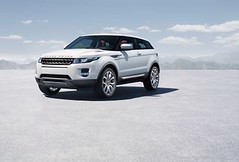
5. **Land Rover Range Rover**The Land Rover Range Rover stands as an icon of luxury and capability, often viewed as the ultimate full-size SUV for those who demand opulence alongside serious off-road prowess. Having been redesigned, for example, in 2022, it consistently delivers on style, comfort, and versatility, appealing to a clientele that equates their vehicle with a regal experience. However, beneath its lavish exterior and formidable abilities lies a reality of substantial upkeep costs, which are crucial for any prospective owner to understand fully.
The data reveals that the average annual repair cost for a Land Rover Range Rover is, much like its imposing size, quite considerable, demanding an average of $1,258 each year simply to maintain its optimum condition. On RepairPal’s reliability scale, the Range Rover scores a modest 2 out of 5, indicating a level of dependability that is below the industry average. This lower reliability rating often correlates with more frequent needs for professional attention and, consequently, higher repair expenditures.
Furthermore, the probability of a Land Rover Range Rover requiring a major repair over a decade of ownership is estimated at 50.6%. This statistic highlights a significant chance of encountering substantial, costly mechanical issues throughout the vehicle’s lifespan. Over a 10-year period, the total cost of ownership, largely driven by maintenance and repairs, is estimated at $18,228. Annual expenses for the Range Rover commence at $735 in the first year, but these are expected to surge to $3,267 by the tenth year, reflecting the escalating demands of its complex nature and advanced luxury features as it ages.
Car Model Information: 2024 Ford Mustang GT Premium
Caption: 2022 Range Rover SE P440e (L460, fifth generation, United Kingdom)
Aka: unbulleted list
Name: Range Rover
Manufacturer: unbulleted list
Production: 1969–present
Assembly: unbulleted list
Class: unbulleted list
Layout: Front-engine, four-wheel-drive layout
Sp: uk
Categories: 1980s cars, 1990s cars, 2000s cars, 2010s cars, 2020s cars
Summary: The Land Rover Range Rover, generally shortened to Range Rover, is a 4WD luxury mid to full size crossover marque and sub-brand of Jaguar Land Rover, owned by India-based Tata Motors. The Range Rover line was launched in 1970 by British Leyland and since 2022 is in its fifth generation.
Additional models have been launched under the Range Rover name, including the Range Rover Sport, Range Rover Evoque, and Range Rover Velar.
Get more information about: Range Rover
Buying a high-performing used car >>>
Brand: Land Rover Model: Range Rover
Price: $48,997 Mileage: 24,328 mi.
Read more about: 15 Classic Cars You Might Want To Skip: An Expert Guide for Discerning Collectors
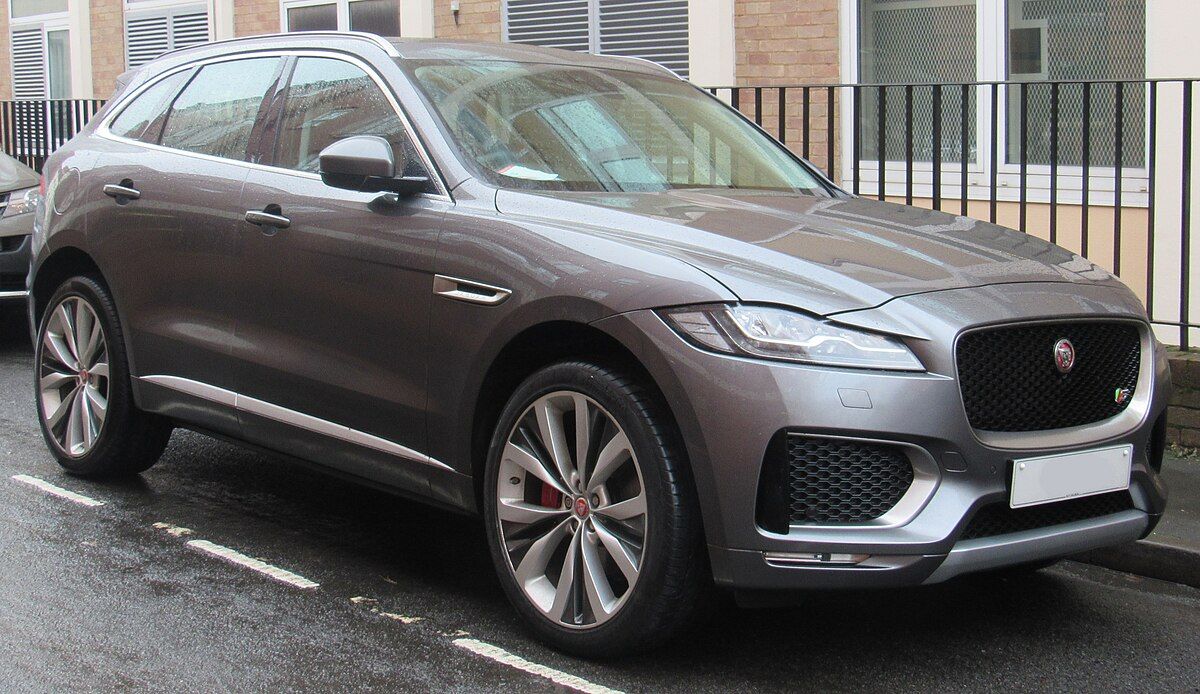
6. **Jaguar F-Pace**The Jaguar F-Pace enters the luxury SUV market as a compelling option, drawing attention with its impressive performance characteristics and sophisticated British styling. It often appeals to SUV enthusiasts who are looking for a premium driving experience but might find the initial purchase costs of some other high-end brands prohibitive. Its relatively lower buying cost can make it seem like an attractive entry point into the luxury segment, yet consumers should be wary that initial savings can sometimes be significantly offset by long-term operational expenses.
While the National Highway Traffic Safety Administration (NHTSA) has not yet provided a formal overall reliability rating for the Jaguar F-Pace, there have been clear indicators of potential concerns regarding its dependability. The vehicle has been subject to two recalls, and six complaints have been registered. These types of early warning signs, even without a comprehensive reliability score, suggest that owners may encounter issues requiring professional intervention, a factor that is crucial for prospective buyers to consider when evaluating the full cost of ownership beyond the sticker price.
The financial preparation required for owning an F-Pace is noteworthy. According to an estimate from AutoList, owners should plan to have a substantial “rainy-day fund” totaling $16,103 set aside specifically for potential repairs over the ten years following the vehicle’s purchase. This considerable sum underscores the expectation of significant maintenance and repair costs, advising owners to be proactively prepared for unexpected issues. This projected cost highlights that even if the initial purchase price is attractive, the long-term financial burden can be substantial.
Car Model Information: 2021 Jaguar F-PACE S
Name: Jaguar F-Pace
Manufacturer: Jaguar Land Rover
ModelCode: X761
Production: February 2016–present
Assembly: Solihull plant
Class: Compact crossover SUV
BodyStyle: SUV
Layout: ubl
Platform: JLR D7a
Related: Jaguar XE,Jaguar XF (X260),Range Rover Velar
Engine: ubl
Motor: 106 kW
Abbr: on
Transmission: Manual transmission,ZF 8HP transmission
Drivetrain: Mild Hybrid
Battery: Kilowatt-hour,Lithium-ion battery
Wheelbase: 2874 mm
Length: 4731 mm
Width: 1936 mm
Height: 1667 mm
Weight: Convert
Designer: Ian Callum
Sp: uk
Categories: 2020s cars, Articles with short description, CS1 maint: archived copy as title, Cars introduced in 2016, Commons category link from Wikidata
Summary: The Jaguar F-Pace (X761) is a compact luxury crossover SUV made by Jaguar Land Rover, a British car manufacturer, under their Jaguar marque. It is the first Jaguar model in the SUV class. It was formally announced at the 2015 North American International Auto Show in Detroit, with sales commencing in 2016 following an unveiling at the 2015 International Motor Show Germany in Frankfurt.
The design of the F-Pace is based on the Jaguar C-X17 concept car, which was unveiled on September 9, 2013, at the Frankfurt Motor Show. The 2017 Jaguar F-Pace has been named the honorary winner of the 2017 World Car of the Year and World Car Design of the Year Awards at the New York International Auto Show. The F-Pace is built at Jaguar Land Rover’s Solihull plant along with the Range Rover Velar and employs an additional 1,300 workers.
Get more information about: Jaguar F-Pace
Buying a high-performing used car >>>
Brand: Jaguar Model: F-Pace
Price: $29,451 Mileage: 23,204 mi.
Read more about: Buyer Warning: 9 Sports Cars That Become Reliability Nightmares Before 50,000 Miles
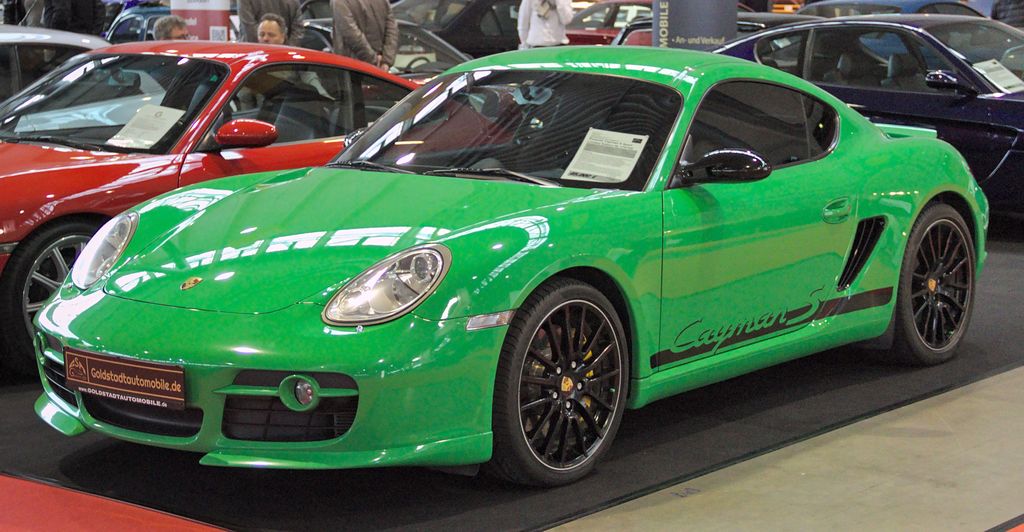
7. **Porsche Cayman**The Porsche Cayman stands out in the luxury compact car segment, highly regarded for its striking aesthetics and an exhilarating performance profile that appeals directly to driving enthusiasts. Its balanced chassis, responsive steering, and potent engine options deliver a captivating driving experience, making it a dream car for many who prioritize driving dynamics and a distinct road presence. However, for all its dynamic appeal and visual charm, the decision to own a Cayman necessitates a clear understanding of the substantial financial commitment required for its long-term upkeep, beyond the initial purchase price.
From a reliability perspective, the Porsche Cayman scores a modest 2 out of 5 on RepairPal’s scale. This rating suggests that while it offers a premium driving experience, it is also likely to require repair jobs more frequently than many other vehicles available on the market. The sophisticated engineering and high-performance components that contribute to its driving prowess also tend to be more complex and, consequently, more prone to needing specialized maintenance and repairs, particularly as the car ages. This means more frequent visits to the mechanic than one might expect from a modern vehicle.
The average annual maintenance cost for the Porsche Cayman is an estimated $1,135. While this figure might not be as high as some of the larger, more complex SUVs featured on this list, it still significantly exceeds the average annual repair costs for a typical vehicle. This consistent demand for substantial annual investment ensures the Cayman remains in peak condition but also requires owners to budget accordingly, especially given that Porsche is consistently ranked as the most expensive brand to maintain overall. The high repair frequency of the Porsche Boxster, which has a reliability rating of 2.5, suggests that frequent maintenance is a characteristic across many Porsche sports car models. To promptly cope with any unexpected condition, it’s recommended to save $952 annually for the Boxster, which, while not specifically the Cayman, reinforces the need for consistent financial preparedness within the brand’s offerings.
Continuing our comprehensive examination of vehicles that demand a significant financial commitment in repairs and maintenance, we now turn to the remaining eight models that consistently rank among the most expensive to keep on the road. Understanding these long-term costs is crucial for any consumer aiming to make a truly informed purchasing decision, transforming what might seem like an attractive deal into a demanding financial commitment. These insights will further underscore why looking beyond initial appeal to the practicalities of ownership is paramount.
Car Model Information: 2016 Porsche Cayman GTS
Name: unbulleted list
Caption: Porsche Boxster Spyder (718)
Manufacturer: Porsche
Aka: unbulleted list
Production: unbulleted list
Assembly: unbulleted list
Class: Sports car
BodyStyle: unbulleted list
Related: unbulleted list
Layout: Rear mid-engine, rear-wheel drive layout
Predecessor: Porsche 968
Categories: All Wikipedia articles written in British English, All articles needing additional references, All articles with dead external links, All articles with unsourced statements, Articles needing additional references from August 2025
Summary: The Porsche Boxster and Cayman are mid-engine two-seater sports cars manufactured and marketed by German automobile manufacturer Porsche across four generations—as a two-door, two-seater roadster (Boxster) and a three-door, two-seater fastback coupé (Cayman).
The first generation Boxster was introduced in 1996; the second generation Boxster and the Cayman arrived in late 2005; and the third generation launched in 2012. Since the introduction of the fourth generation in 2016, the two models have been marketed as the Porsche 718 Boxster and Porsche 718 Cayman.
The nameplate Boxster is a portmanteau of boxer, a reference to its flat or boxer engine, and Speedster, a nod to the original Porsche Speedster of the 1950’s. The nameplate Cayman is an alternative spelling of caiman, a member of the alligator family.
In May 2025 Porsche North America confirmed the rumours that global “production for all current 718 Boxster and 718 Cayman variants, including RS models, is scheduled to end in October of” 2025. Porsche CEO Oliver Blume has confirmed future production of full-electric replacements but said they will arrive in the “medium term.”
Get more information about: Porsche Boxster and Cayman
Buying a high-performing used car >>>
Brand: Porsche Model: Cayman
Price: $79,980 Mileage: 16,833 mi.
Read more about: Unleashing Performance, Ensuring Protection: 12 Sports Cars Where Speed Meets Stellar Safety Ratings

8. **Porsche 911**The Porsche 911 is consistently lauded for delivering an unparalleled driving experience, a characteristic that often leads enthusiasts to consider its associated costs a small price for the privilege of ownership. This iconic vehicle, celebrated for its performance and engineering, offers a range of models designed to suit various preferences, yet it also presents a notable financial commitment in terms of maintenance. The allure of the 911’s dynamic capabilities is undeniable, but it is accompanied by higher operational expenses that prospective owners must consider.
From a reliability perspective, the Porsche 911 ranks 25th out of 31 cars in its category, indicating that while it excels in performance, its dependability is not a standout feature among its peers. The sophisticated engineering that contributes to its driving prowess can also lead to complex repair needs. Such a ranking suggests that owners should anticipate needing professional attention more frequently than with vehicles offering higher reliability scores.
Financially, the average annual repair cost for a Porsche 911 is estimated at $1,072. While this figure might be deemed acceptable by many dedicated enthusiasts, it remains significantly above the average for other vehicles. Porsche, as a brand, consistently features among the most expensive to maintain, with an average annual repair and maintenance cost of $1,192, and approximately 21% of its repairs costing $2,000 or more. This data reinforces the necessity of a robust budget for its upkeep.
Prospective 911 owners should budget not just for routine services but also for potential high-cost repairs, ensuring the vehicle remains in optimal condition. The brand’s reputation for premium parts and specialized labor translates directly into these elevated expenses. Careful financial planning is essential to fully embrace the ownership experience without unexpected financial strain.
Car Model Information: 2024 Porsche 911
Name: Porsche 911
Caption: The 1 millionth 911 produced on display at Volkswagen Group Forum, Berlin
Designer: Ferdinand Alexander Porsche
Manufacturer: Porsche
Production: September 1964 – present
Assembly: Stuttgart,Baden-Württemberg
Class: Sports car
BodyStyle: unbulleted list
Related: unbulleted list
Layout: Rear-engine design,rear-wheel drive
Predecessor: Porsche 356
Categories: 1970s cars, 1980s cars, 1990s cars, 2+2 coupés, 2000s cars
Summary: The Porsche 911 model series (pronounced Nine Eleven or in German: Neunelf) is a family of German two-door, high performance rear-engine sports cars, introduced in September 1964 by Porsche AG of Stuttgart, Germany, and now in its eighth generation. All 911s have a rear-mounted flat-six engine, and usually 2+2 seating, except for special 2-seater variants. Originally, 911s had air-cooled engines, and torsion bar suspension, but the 911 has been continuously enhanced, and evolved across generations. Though the 911 core concept has remained largely unchanged, water-cooled engines were introduced with the 996 series in 1998, and front and rear suspension have been replaced by Porsche-specific MacPherson suspension up front, and independent multi-link rear suspension.
The 911 has been raced extensively by private and factory teams, in a variety of classes. It is among the most successful competition cars. In the mid-1970s, the naturally aspirated 911 Carrera RSR won world championship races including Targa Florio and the 24 Hours of Daytona. The 911-derived 935 turbo also won the 24 Hours of Le Mans in 1979. Porsche won the World Championship for Makes in 1976, 1977, 1978, and 1979 with 911-derived models.
In a 1999 poll to determine the Car of the Century, the 911 ranked fifth — one of two in the top five that had remained continuously in production (the original Beetle remained in production until 2003). The one millionth example was manufactured in May 2017 and is in the company’s permanent collection.
Get more information about: Porsche 911
Buying a high-performing used car >>>
Brand: Porsche Model: 911
Price: $239,888 Mileage: 6,944 mi.
Read more about: 15 Classic Cars You Might Want To Skip: An Expert Guide for Discerning Collectors
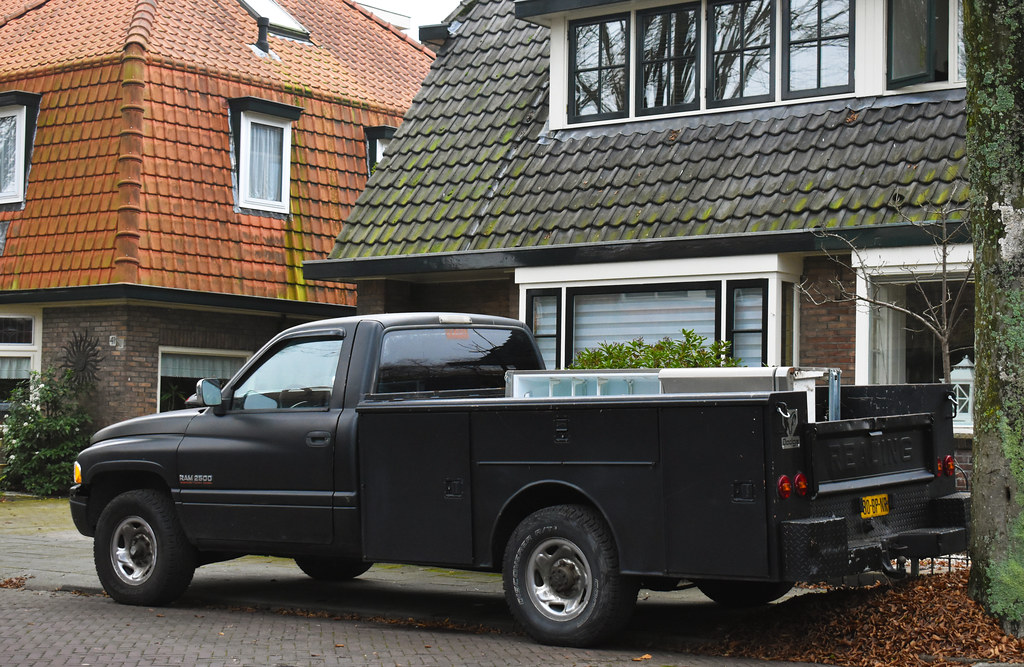
9. **RAM 2500**The RAM 2500, a member of RAM’s heavy-duty truck lineup, is engineered for demanding tasks, offering exceptional capability for towing and hauling. These vehicles are primarily utilized by individuals and businesses requiring robust utility for their operations. While their rugged construction and formidable strength are significant selling points, they also come with a reputation for substantial long-term maintenance and repair costs that buyers must factor into their budgets.
Reliability testing has revealed that heavy-duty trucks from RAM, specifically the 2500-5500 series, are among the worst performers in terms of ten-year dependability. There is a high probability of 79.2% that a RAM 2500-5500 truck will require a significant repair within a decade of ownership. This statistic indicates a substantial risk of encountering costly mechanical issues over the vehicle’s lifespan, highlighting a critical area for concern.
The financial implications of owning a RAM 2500 are considerable. The average cost of keeping this heavy-duty truck in its best shape accumulates to almost $26,000 over a ten-year period. This figure represents one of the highest maintenance costs on our list, underscoring the significant financial burden associated with these capable workhorses. Consumers need to understand that the initial purchase price is only one component of the total cost of ownership.
This high cost of ownership demonstrates that expensive maintenance is not exclusively a trait of luxury brands. Heavy-duty vehicles, due to their complex systems and the strenuous work they perform, also incur substantial repair expenses. Businesses and individuals considering a RAM 2500 should prepare for these significant outlays, perhaps by considering extended warranties or setting aside a dedicated repair fund to mitigate financial surprises.
Car Model Information: 2016 RAM 2500 Longhorn
Name: Dodge Ram / Ram pickup
Caption: 2017 Ram 1500 Express
Manufacturer: Dodge
ModelYears: 1981–present
Production: October 1980 – present
Class: Pickup truck#Full-size pickup truck,Pickup truck#Heavy-duty pickup truck
Layout: Front-engine, rear-wheel-drive layout,rear-wheel drive
Predecessor: Dodge D series
Categories: 1990s cars, 2000s cars, 2010s cars, 2020s cars, All-wheel-drive vehicles
Summary: The Ram pickup (marketed as the Dodge Ram until 2010 when Ram Trucks was spun-off from Dodge) is a full-size pickup truck manufactured by Stellantis North America (formerly Chrysler Group LLC and FCA US LLC) and marketed from 2010 onwards under the Ram Trucks brand. The current fifth-generation Ram debuted at the 2018 North American International Auto Show in Detroit, Michigan, in January of that year.
Previously, Ram was part of the Dodge line of light trucks. The Ram name was introduced in October 1980 for model year 1981, when the Dodge D series pickup trucks and B series vans were rebranded, though the company had used a ram’s-head hood ornament on some trucks as early as 1933.
Ram trucks have been named Motor Trend magazine’s Truck of the Year eight times; the second-generation Ram won the award in 1994, the third-generation Ram heavy-duty won the award in 2003, the fourth-generation Ram Heavy Duty won in 2010 and the fourth-generation Ram 1500 won in 2013 and 2014, and the current fifth-generation Ram pickup became the first truck in history to win the award four times, winning in 2019, 2020, 2021 and most recently, 2025.
Get more information about: Ram pickup
Buying a high-performing used car >>>
Brand: RAM Model: 2500
Price: $31,218 Mileage: 113,036 mi.
Read more about: Beyond the Quarter-Million Mark: Our Shortlist of Cars Engineered for Extreme Longevity
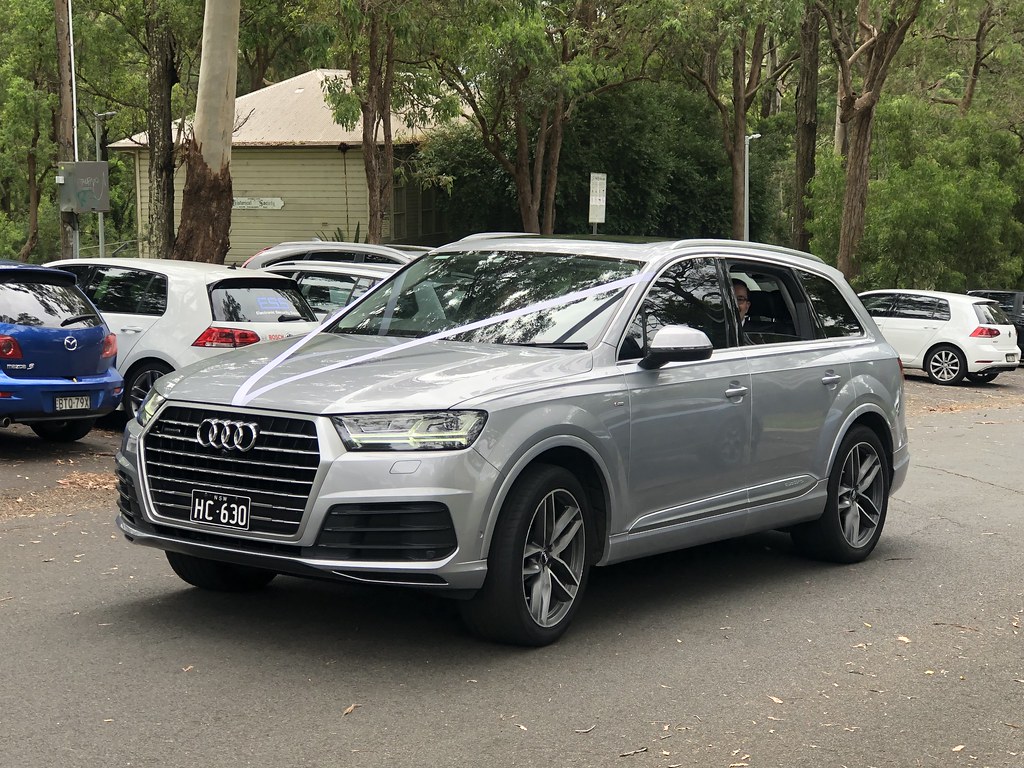
10. **Audi Q7**The Audi Q7 is a full-size luxury SUV recognized for its comfortable and pleasing driving experience, blending sophisticated design with practical utility. It often appeals to consumers seeking a premium family vehicle that delivers both performance and a refined interior. However, as with many luxury vehicles, the allure of the Audi Q7 extends beyond its initial purchase price to include a consideration of its long-term maintenance demands.
In terms of reliability, the Audi Q7 has a RepairPal rating of 2.5 out of 5, positioning it 8th on a list of 19 full-size luxury SUVs. While its probability of needing significant repair may be lower than some other vehicles on this list, the actual cost of those repairs remains substantial. This indicates that while issues might not be as frequent, their resolution can be quite expensive when they do occur.
The average annual maintenance cost for an Audi Q7 is approximately $1,185. This figure is significantly higher than the average for most vehicles, reflecting the cost of specialized parts and labor associated with premium German engineering. Prospective owners should assess this ownership cost thoroughly before committing to the purchase, ensuring their budget can accommodate these ongoing expenses.
Audi, as a brand, consistently ranks among the most expensive to maintain, with an average annual repair and maintenance cost of $987 and about 13% of repairs costing $2,000 or more. This aligns with the broader observation that German brands tend to have higher annual costs due to their complex designs and “over-engineered” nature, as noted by industry experts. Consumers should prioritize regular maintenance to prevent more severe and costly issues from developing.
Car Model Information: 2021 Audi Q7 55 Premium Plus
Name: Audi Q7
Manufacturer: Audi AG
Production: November 2005–present
ModelYears: 2006–present
Class: Full-size,luxury SUV
BodyStyle: SUV
Layout: Longitudinal engine,front-engine, four-wheel-drive
Sp: uk
Categories: 2010s cars, 2020s cars, All-wheel-drive vehicles, All Wikipedia articles written in British English, All articles with dead external links
Summary: The Audi Q7 is a crossover SUV made by the German manufacturer Audi, unveiled in September 2005 at the Frankfurt Motor Show. Production of this seven-seater SUV began in November 2005 at the Volkswagen Bratislava Plant in Bratislava, Slovakia.
The Q7 was the first SUV sold by Audi and went on sale in 2006. Later, Audi’s second SUV, the Q5, was unveiled as a 2009 model. Audi has since unveiled a third SUV model, the Q3, which went on sale in the third quarter of 2011, and a fourth SUV model, the Q2, which went on sale in November 2016. The Q7 shares a Volkswagen Group MLB platform and chassis with the Bentley Bentayga, Lamborghini Urus, Porsche Cayenne and the Volkswagen Touareg.
The Q7 is the second largest vehicle from Audi, being surpassed by the Q6 since 2022. While the Q7 has been the flagship SUV in Audi’s product portfolio, a top-of-the-line model with a lower roof, called the Audi Q8, was released in 2018.
It was one of the vehicles involved in the Volkswagen emissions scandal, with the company ordered to buy back some of the affected cars manufactured between 2009 and 2012. The Q7 is also subject to hundreds of NTSB complaints with many relating to potentially catastrophic engine failure issues, and a class-action lawsuit related to squealing brakes.
Get more information about: Audi Q7
Buying a high-performing used car >>>
Brand: Audi Model: Q7
Price: $29,991 Mileage: 52,765 mi.
Read more about: Don’t Waste Your Cash: 6 SUVs Prone to Costly Early Fixes

11. **BMW X5**The BMW X5 is another full-size luxury SUV from a prominent German manufacturer, known for offering strong performance and reasonable comfort. It fits into BMW’s lineup between the smaller X3 and the larger X7, appealing to those who desire a well-rounded luxury SUV experience. However, its sophisticated design and performance capabilities often translate into a requirement for frequent visits to a repair shop, underscoring the importance of understanding its long-term financial implications.
Regarding reliability, the BMW X5 holds a RepairPal rating of 2 out of 5. This score suggests that the vehicle is likely to require repairs more often than the average car, indicating a level of dependability that falls below industry standards. The complex systems and advanced technologies inherent in luxury SUVs like the X5 can contribute to more frequent mechanical issues as the vehicle ages.
The financial commitment for maintaining a BMW X5 is substantial, with owners needing to set aside an average of $1,166 yearly for repairs. Over a ten-year period, the total ownership cost for an X5 is estimated at $18,389, with annual costs escalating from $642 in the first year to $3,428 by the tenth year. There is also a 54.6% chance of needing a major repair during that time, reflecting its maintenance-intensive nature.
BMW is ranked among the top five most expensive brands to maintain and repair, with an average annual cost of $968 and an average of 0.95 unscheduled repairs per year. This high frequency of repairs, coupled with the higher costs of specialized parts and labor typical of German engineering, necessitates a significant ongoing budget. Regular maintenance according to the owner’s manual is crucial to mitigate some of these escalating costs.
Car Model Information: 2022 BMW X5 xDrive40i
Name: BMW X5
Manufacturer: BMW
Class: Mid-size,luxury vehicle,crossover SUV
BodyStyle: SUV
Production: 1999–present
Layout: Front-engine, four-wheel-drive layout,Front-engine, rear-wheel-drive layout
Categories: 2000s cars, 2010s cars, All-wheel-drive vehicles, All articles with unsourced statements, Articles with short description
Summary: The BMW X5 is a mid-size luxury crossover SUV produced by BMW. The X5 made its debut in 1999 as the E53 model. It was BMW’s first SUV. At launch, it featured all-wheel drive and was available with either a manual or automatic gearbox. The second generation was launched in 2006, and was known internally as the E70. The E70 featured the torque-split capable xDrive all-wheel drive system mated to an automatic gearbox. In 2009, the X5 M performance variant was released as a 2010 model.
BMW marketed the X5 officially as a “Sports Activity Vehicle” (SAV), rather than an SUV, to indicate its on-road handling capability despite its large dimensions. The X5 signaled a shift away from the utilisation of body-on-frame construction, in favour of more modern monocoque chassis construction. Although the Mercedes-Benz M-Class was introduced more than a year prior to the X5, the X5 was the first to utilise a monocoque chassis. The M-Class used body-on-frame construction until its second generation.
The X5 is primarily manufactured in North America, at BMW Group Plant Spartanburg. Assembly operations also took place in Russia by Avtotor until February 2022, along with operations in India, Indonesia, Malaysia, and Thailand. The X5 is also modified for armoured security versions, at the BMW de México Toluca plant.
The automaker’s SAV series, which was started by the X5, has expanded with derivations of other number-series BMWs. This began in 2003 with the X3, and continued in 2008 with the X6 (which shares its platform with the X5).
Get more information about: BMW X5
Buying a high-performing used car >>>
Brand: BMW Model: X5
Price: $41,491 Mileage: 39,525 mi.
Read more about: Don’t Waste Your Cash: 6 SUVs Prone to Costly Early Fixes
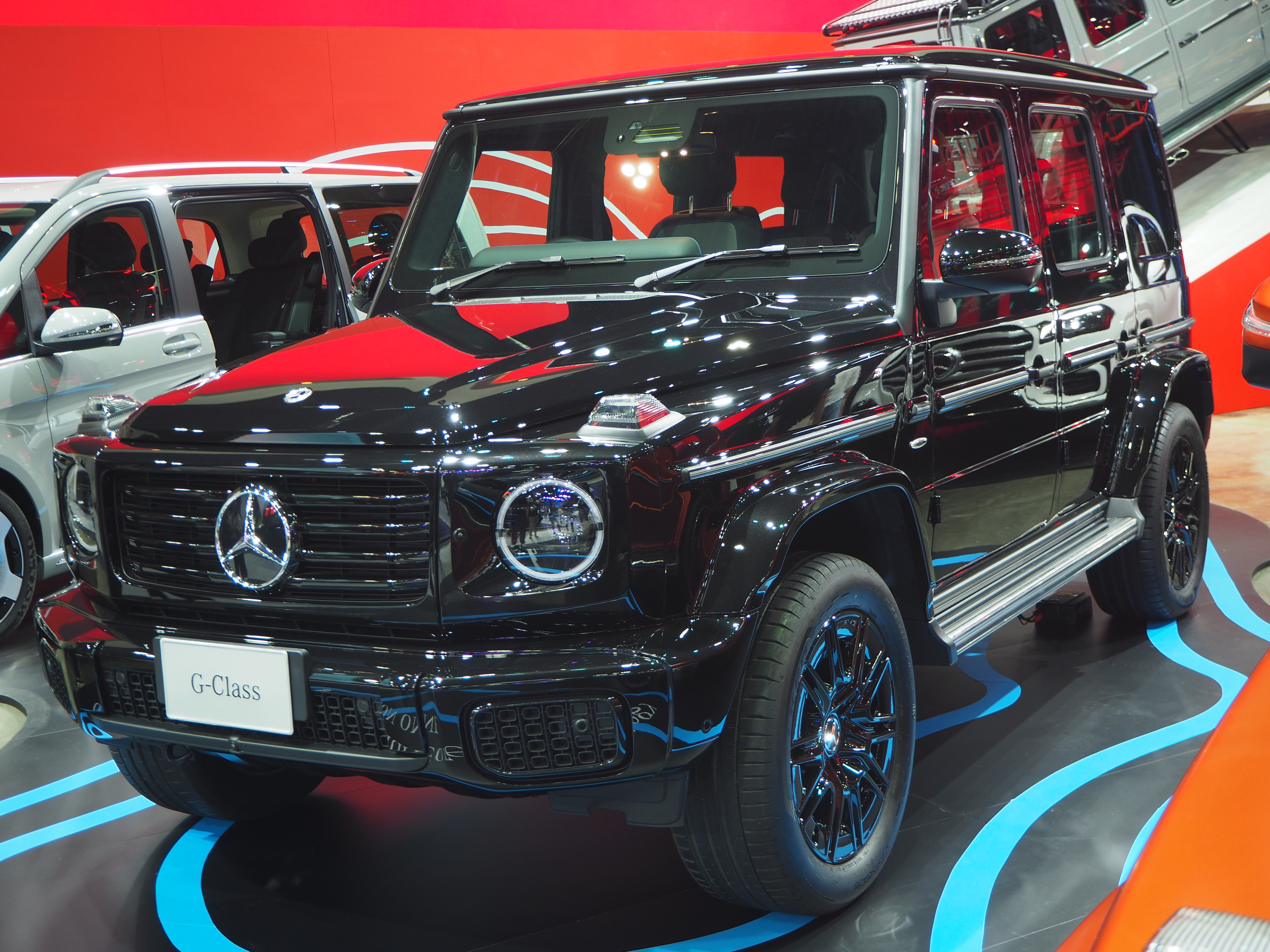
12. **Mercedes-Benz G-Class**The Mercedes-Benz G-Class, famously recognizable for its distinctive boxy silhouette, has achieved iconic status, appearing in numerous movies and series. Its appeal lies in a unique blend of rugged capability and compact, luxurious personality, attracting buyers who desire both prestige and formidable off-road prowess. While several models have joined the G-Class lineup over the years, each typically carries a serious repair cost, which is a key factor for prospective owners.
For the G-Class, data indicates a 42.7% chance that owners will need to spend on some inevitable repair within the first ten years of ownership. While this percentage might appear lower than some other vehicles on this list, the costs associated with these repairs are notably high. The vehicle’s complex mechanics and advanced luxury features contribute to these elevated expenses when issues arise.
Indeed, the financial outlay for G-Class repairs over a ten-year period averages more than $16,500, making it one of the highest costs on our list. This considerable sum reflects the premium nature of its parts and the specialized labor often required for its maintenance. Such figures underscore that the initial purchase is merely the beginning of the financial journey for a G-Class owner.
Mercedes-Benz, while narrowly avoiding the top five most expensive brands to maintain, still ranks highly (at No. 6), reinforcing the general trend for luxury and imported vehicles to incur more expensive parts and labor costs. Buyers should be prepared for significant financial commitments to preserve the G-Class’s optimal condition and functionality, emphasizing the importance of a contingency fund for unexpected repairs.
Read more about: Don’t Waste Your Cash: 6 SUVs Prone to Costly Early Fixes
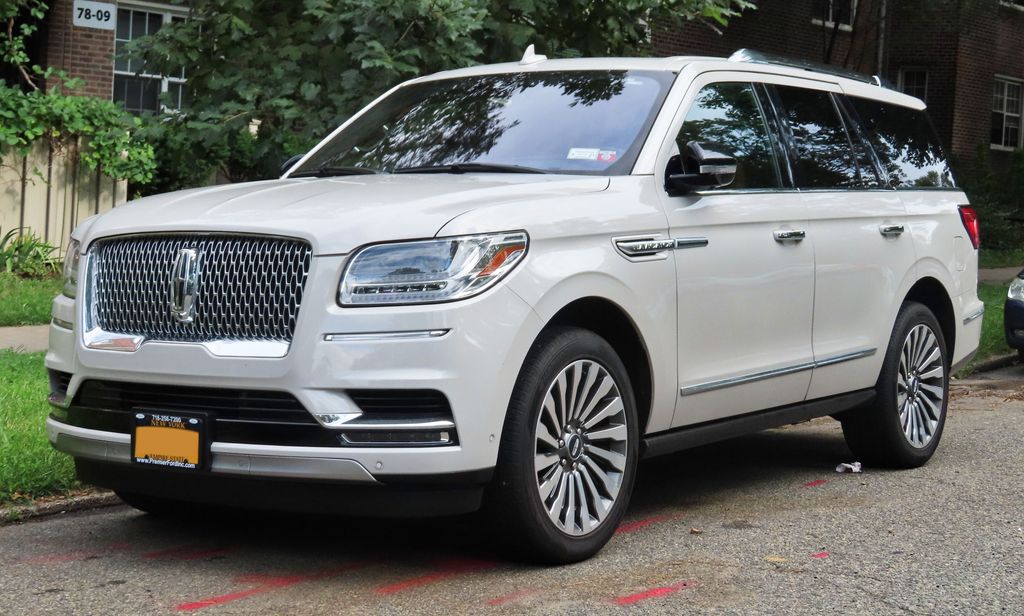
13. **Lincoln Navigator**The Lincoln Navigator stands as a luxury full-size SUV that provides ample space, comfort, and a commanding road presence. It competes in a segment where opulence and features are paramount. While its standing on maintenance lists might be perceived as “not as bad as others in its category,” indicating a relative measure of dependability, consumers should still approach ownership with a clear understanding of its financial demands.
With a RepairPal reliability rating of 2.5 out of 5, the Lincoln Navigator demonstrates a level of maintenance need that, while perhaps not as extreme as some other luxury vehicles, still warrants attention. This rating suggests that owners should anticipate needing repairs periodically, even if less frequently than models with lower scores. Its complex systems and premium components inherently contribute to higher repair costs.
Despite its comparatively better reliability rating, the Lincoln Navigator will still prove “heavy on the pocket” when it comes to ongoing upkeep. The average annual repair cost for this luxury SUV is $1,089. This figure significantly surpasses the average annual repair costs for a typical vehicle, confirming that luxury status often correlates with higher maintenance expenditures, regardless of specific reliability rankings.
Prospective Lincoln Navigator owners should recognize that even a relatively “better” performing luxury SUV still carries substantial long-term costs. As vehicles age, maintenance expenses tend to rise, and luxury models are particularly susceptible to this trend due to their advanced features and specialized parts. Proactive budgeting and adherence to recommended maintenance schedules are advisable to manage these costs effectively.
Car Model Information: 2023 Lincoln Navigator Reserve
Name: Lincoln Navigator
Manufacturer: The Lincoln Motor Company
Caption: 2019 Lincoln Navigator
Production: May 1997–present
ModelYears: 1998–present
Class: Full-size,luxury SUV
BodyStyle: 5-door SUV
Related: Ford Expedition,Ford F-Series
Layout: Front-engine, rear-wheel-drive layout,rear-wheel drive
Assembly: Wayne, Michigan
Categories: 2000s cars, 2010s cars, 2020s cars, All-wheel-drive vehicles, All Wikipedia articles written in American English
Summary: The Lincoln Navigator is a full-size luxury SUV marketed and sold by the Lincoln Motor Company brand of Ford Motor Company since the 1998 model year. Sold primarily in North America, the Navigator is the Lincoln counterpart of the Ford Expedition. It is the heaviest production Lincoln ever built, and is also the Lincoln with the greatest cargo capacity and the first non-limousine Lincoln to offer seating for more than six people.
Lincoln Navigator production was sourced from 1997 to 2009 at the Michigan Assembly Plant in Wayne, Michigan. Since 2009, production has also been sourced from the Kentucky Truck Plant in Louisville, Kentucky.
Get more information about: Lincoln Navigator
Buying a high-performing used car >>>
Brand: Lincoln Model: Navigator
Price: $65,491 Mileage: 22,849 mi.
Read more about: From Dust to Dollars: Record-Breaking Classic Cars Unearthed from Barns and Forgotten Garages
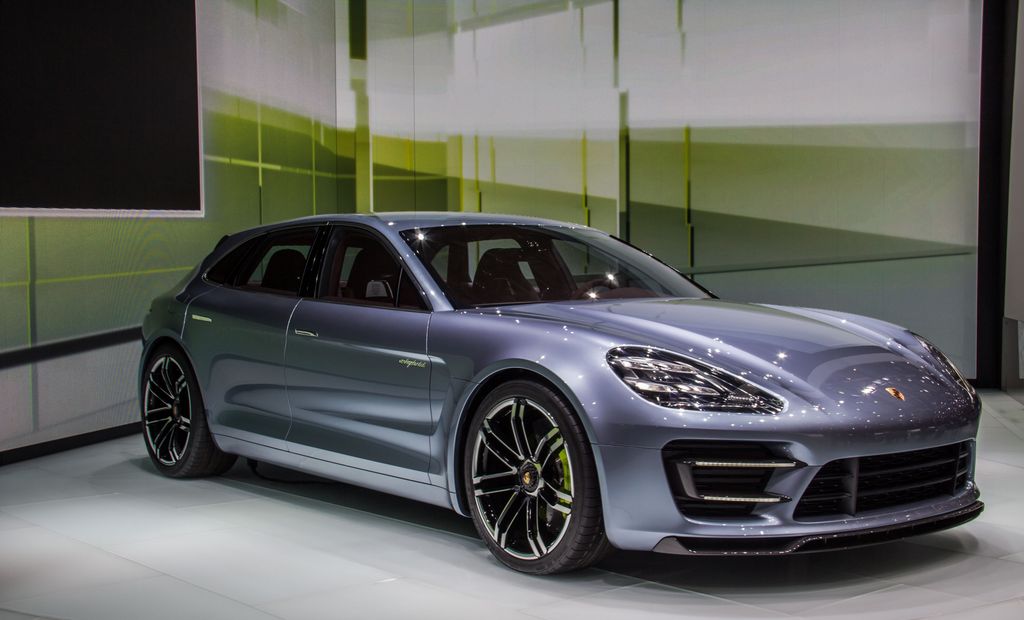
14. **Porsche Panamera**The Porsche Panamera is lauded for its unique blend of luxury, high performance, and exceptional comfort, making it a dream come true for many owners seeking a sophisticated driving experience in a four-door format. This vehicle embodies Porsche’s commitment to dynamic capability and premium design, offering a distinctive option in the luxury sedan segment. However, its advanced engineering and exclusive nature come with considerable financial implications for maintenance.
When it comes to repair costs, the Porsche Panamera is described as a “total bummer.” According to RepairPal reliability ratings, the Panamera ranks last in its vehicle category, with an exceptionally low reliability score of 0.5 out of 5. This rating is a stark indicator of its high propensity for mechanical issues and frequent repair needs, placing it among the least reliable vehicles in its class.
Financially, the average annual repair cost for a Porsche Panamera is $1,252. This figure is significantly higher than the average for many other vehicles, underscoring the substantial ongoing investment required to maintain it. The combination of its last-place reliability ranking and high annual repair costs highlights the critical need for significant financial preparedness for Panamera owners.
Given that Porsche is consistently ranked as the most expensive brand to maintain overall, with an average annual cost of $1,192, the Panamera exemplifies this trend. Its extremely low reliability rating further compounds the financial challenge, as frequent and expensive repairs are a realistic expectation. Owners should consider securing robust extended warranties and meticulously following all maintenance recommendations to help manage these predicted outlays.
Car Model Information: 2018 Porsche Panamera Base
Name: Porsche Panamera
Caption: 2024 Porsche Panamera (976)
Manufacturer: Porsche
Production: 2009–present
Assembly: Leipzig
Class: Luxury car
Layout: Front-engine, rear-wheel-drive layout
Predecessor: Porsche 989
Sp: uk
Categories: 2010s cars, 2020s cars, All-wheel-drive vehicles, All articles containing potentially dated statements, All articles with unsourced statements
Summary: The Porsche Panamera is a mid- to full-sized luxury car (E-segment or F-segment for LWB in Europe) manufactured and marketed by German automobile manufacturer Porsche. It currently spans across three generations, using a front-engine and rear- or all-wheel drive configuration.
The Panamera debuted at the 13th Auto Shanghai International Automobile Show in April 2009, later launching hybrid and diesel versions in 2011. In April 2013, the company introduced a facelifted model, again at the Shanghai Auto Show, followed by the US introduction of a plug-in hybrid version, the Panamera S E-Hybrid, in November 2013. Porsche launched the second-generation Panamera in 2016, and in November 2023, the third generation was introduced.
The Panamera name, as with the Carrera name, is derived from the Carrera Panamericana race.
Get more information about: Porsche Panamera
Buying a high-performing used car >>>
Brand: Porsche Model: Panamera
Price: $40,888 Mileage: 56,253 mi.
Read more about: What Happened to Them? A Deep Dive into 14 Iconic European and American Cars That Disappeared from Production
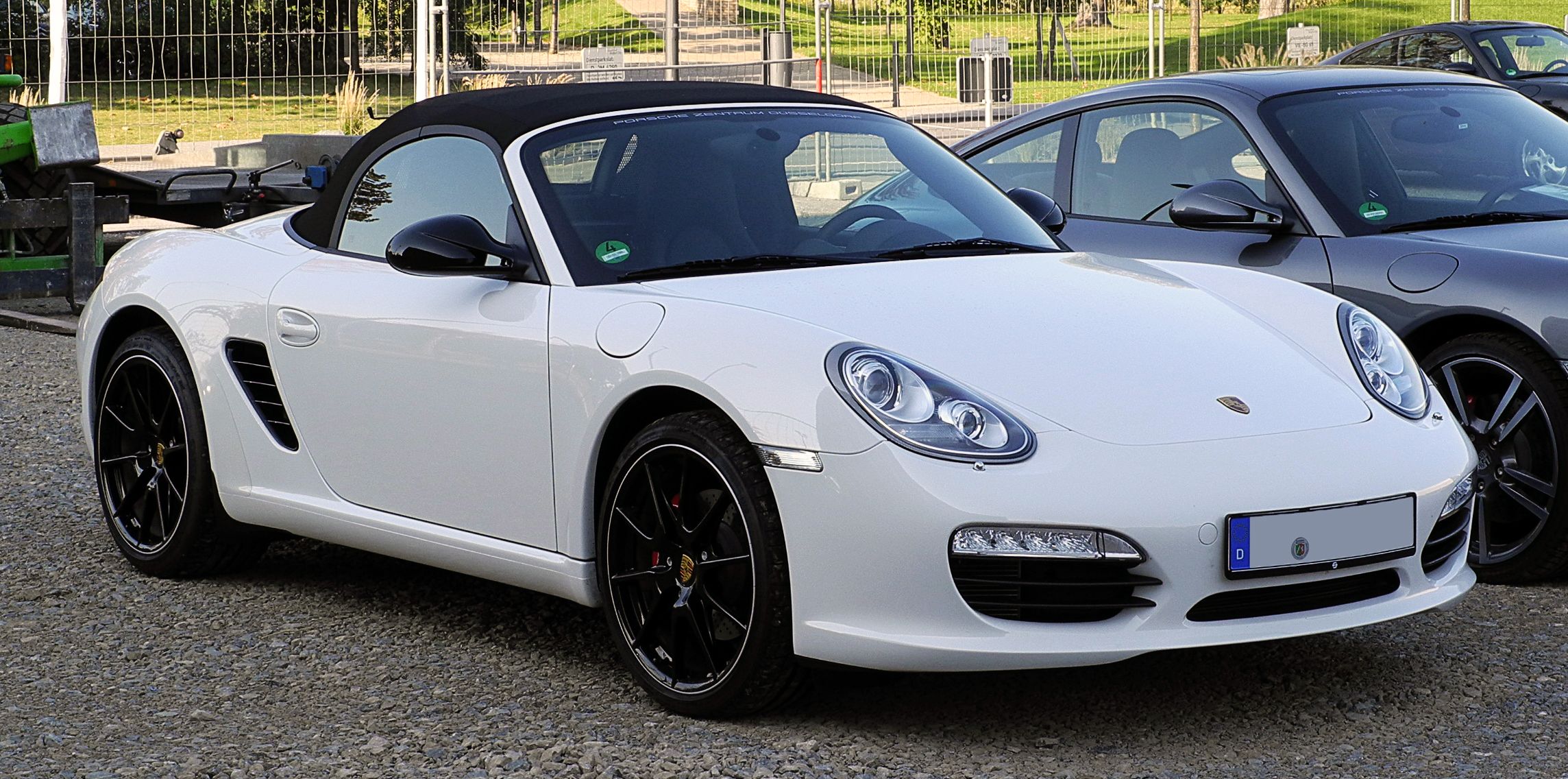
15. **Porsche Boxster**The Porsche Boxster is a luxury compact car that, like its sibling the Cayman, is valued for its engaging driving dynamics and elegant design. While it offers an exhilarating open-top experience and the prestige of the Porsche badge, it is also characterized by a high repair frequency, demanding careful consideration from potential owners regarding its long-term upkeep.
From a reliability standpoint, the Porsche Boxster has a RepairPal rating of 2.5 out of 5. While this is slightly better than some other Porsche models, it still suggests a higher likelihood of needing repairs compared to the industry average. The intricate engineering required for its performance and handling often translates into more frequent mechanical attention, particularly as the vehicle accumulates mileage.
To promptly cope with any unexpected conditions, it is recommended for Boxster owners to save $952 annually specifically for maintenance and repairs. While this figure might not be as high as some of the larger, more complex SUVs or performance cars featured on this list, it still significantly outweighs the average annual repair costs for a typical vehicle, indicating a continuous financial commitment.
This consistent demand for annual savings reinforces that frequent maintenance and repair needs are a characteristic across many Porsche sports car models. The sophisticated nature of these vehicles means that even relatively minor issues can lead to substantial expenses due to specialized parts and expert labor. Therefore, consistent financial preparedness is essential for any Porsche Boxster owner, ensuring the vehicle can be maintained to its high standards without undue financial stress.
### Making Informed Choices for Your Road Companion
As our in-depth analysis concludes, it becomes clear that the joy of vehicle ownership can indeed be a double-edged sword. While the initial purchase price is a significant factor, the true cost of owning a car is profoundly shaped by its long-term maintenance and repair expenses. The 15 vehicles highlighted in this article, ranging from luxury SUVs and high-performance sports cars to heavy-duty commercial trucks, exemplify models where these ongoing costs can quickly transform a prized possession into a demanding financial commitment.
These vehicles, despite their appeal in performance, comfort, or utility, often carry significant financial risks due to their complex designs, specialized parts, and inherent reliability challenges. Brands like Porsche, Land Rover, Jaguar, Audi, and BMW consistently rank among the most expensive to maintain, a pattern often attributed to their ‘over-engineered’ German designs or the premium nature of their components. Even robust trucks like the RAM 2500 demonstrate that high maintenance costs are not exclusive to traditional luxury segments.
Car Model Information: 2014 Porsche Boxster Base
Name: unbulleted list
Caption: Porsche Boxster Spyder (718)
Manufacturer: Porsche
Aka: unbulleted list
Production: unbulleted list
Assembly: unbulleted list
Class: Sports car
BodyStyle: unbulleted list
Related: unbulleted list
Layout: Rear mid-engine, rear-wheel drive layout
Predecessor: Porsche 968
Categories: All Wikipedia articles written in British English, All articles needing additional references, All articles with dead external links, All articles with unsourced statements, Articles needing additional references from August 2025
Summary: The Porsche Boxster and Cayman are mid-engine two-seater sports cars manufactured and marketed by German automobile manufacturer Porsche across four generations—as a two-door, two-seater roadster (Boxster) and a three-door, two-seater fastback coupé (Cayman).
The first generation Boxster was introduced in 1996; the second generation Boxster and the Cayman arrived in late 2005; and the third generation launched in 2012. Since the introduction of the fourth generation in 2016, the two models have been marketed as the Porsche 718 Boxster and Porsche 718 Cayman.
The nameplate Boxster is a portmanteau of boxer, a reference to its flat or boxer engine, and Speedster, a nod to the original Porsche Speedster of the 1950’s. The nameplate Cayman is an alternative spelling of caiman, a member of the alligator family.
In May 2025 Porsche North America confirmed the rumours that global “production for all current 718 Boxster and 718 Cayman variants, including RS models, is scheduled to end in October of” 2025. Porsche CEO Oliver Blume has confirmed future production of full-electric replacements but said they will arrive in the “medium term.”
Get more information about: Porsche Boxster and Cayman
Buying a high-performing used car >>>
Brand: Porsche Model: Boxster
Price: $34,989 Mileage: 64,592 mi.
Read more about: Unleashing Performance, Ensuring Protection: 12 Sports Cars Where Speed Meets Stellar Safety Ratings
For consumers, the key takeaway is the absolute necessity of conducting thorough research beyond showroom appeal. Prospective buyers must diligently assess reliability ratings, average annual repair costs, and the probability of major repairs. Implementing proactive strategies such as budgeting for a ‘rainy-day fund,’ adhering to regular maintenance schedules, considering extended warranties, and understanding the factors that influence repair costs—like vehicle make, part availability, and labor rates—are indispensable. Choosing your road companion wisely, armed with comprehensive knowledge of its potential financial demands, ensures a smoother, more predictable journey, literally and figuratively.

